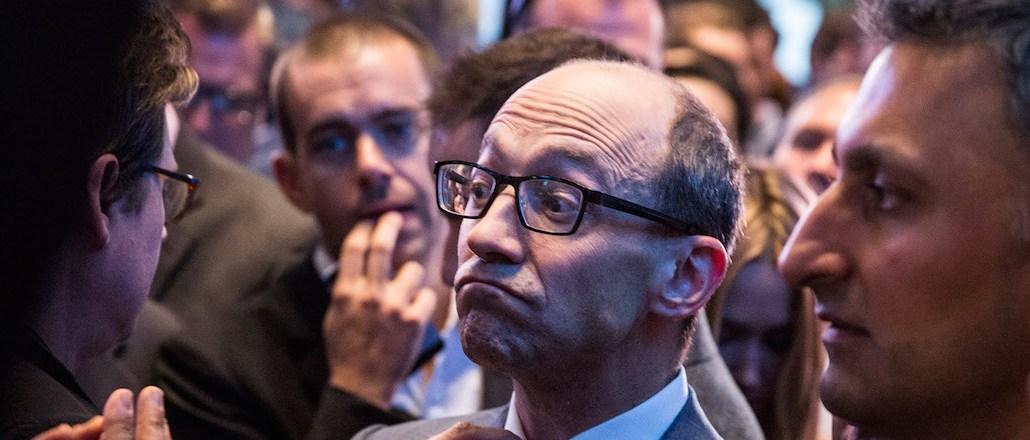Save 50% on a 3-month Digiday+ membership. Ends Dec 5.

This post was written by Alan Wolk, a consultant with BRaVe Ventures, strategic advisors for the media & technology revolution, along with BRaVe co-founder Jesse Redniss and RAPP svp and director of creative technology Craig Elimeliah.
It may be the comeback story of the year. No, we’re not talking about Beck nabbing the Grammy from Beyoncé in front of a dumbfounded Kanye. We’re talking Twitter.
After struggling for years to find a way to actually make money, Twitter finally seems to have embraced who they are. Twitter has come to terms with the fact that they’re never going to be a shorthand version of Facebook. And here’s the thing: While many people actively dislike and avoid Twitter the platform, the masses are very interested in what’s being said on it.
That alone will be the key to Twitter’s success: the ability to take what’s said on the platform and bring it to people who’ll never use it.
Surfacing tweets off-platform was Twitter’s strategy when they cozied up to the TV networks five years ago. A relationship they then rode to the largest free advertising campaign in history, with billions upon billions of free TV screen impressions.
Only the platform never took off the way it was supposed to. When tweets are on TV, you can’t touch them. You can’t share them. You can’t click on any links. All you’re left with are 140 characters of varying degrees of cleverness
Twitter has even taken steps to ensure that interactivity matters. Take native video: Rather than rely on Vine or YouTube, Twitter now lets users pack 30 seconds’ worth of video into every tweet. That’s an entire TV commercial showing up as a native ad. With 140 characters of explanation and a link you can click on.
Ad position: web_incontent_pos1
Even more genius: all that data. Now you can know exactly who interacted with your tweet ad, who clicked on which links, when, where and (quite possibly) why. The ability to take tweets off-site turns Twitter into a publisher. Or Twitter’s users, to be exact. This gives advertisers multiple options too, on what types of tweets and tweeters to surface.
An automobile manufacturer can choose to surface a tweet from a well-known automotive writer. It’s not just advertisers either: Media outlets can use Twitter to push out breaking news, bring viewers to their sites as stories unfold, teasing them with video clips.
Two new Twitter tools: Curator, an app for pushing out curated tweet lists and Niche, a social media star talent agency, give Twitter even more publishing chops: they can provide a complete 360 experience, including the talent to create and bring messages to life. That’s something television networks can’t do, and it gives Twitter a very powerful advantage in the coming war for eyeballs.
The other brilliant thing Twitter did was to ink a deal with Google allowing tweets to show up higher in search ranking. The more buzz a tweet gets, the more platforms it shows up on, the higher it ranks in search. The cycle can actually start with a TV commercial that generates a lot of Twitter activity that coalesces around a hashtag that gets served up as a third-party tweet ad, that gets retweeted … well, you get the picture. And when you think about all those tweet ads now also showing up in search with their links and their videos, it’s OMFG, this is going to be huge.
Perhaps. One thing we’re keeping an eye on is consumer pushback to tweet ads dominating search results. Google will need to come up with an algorithm that keeps this to a minimum so that users still primarily find information rather than brand-issued tweets.
Ad position: web_incontent_pos2
Assuming Google does this (eventually), what we’re left with is an incredibly robust delivery system for news, information and brand messaging that reaches users anywhere and everywhere in a way that’s easy to track and learn from.
It will be interesting to see how the advertising community— and Wall Street— react to this brand new Twitter. We’re thinking they’ll have a very positive reaction.
More in Media

Digiday+ Research Subscription Index 2025: Subscription strategies from Bloomberg, The New York Times, Vox and others
Digiday’s third annual Subscription Index examines and measures publishers’ subscription strategies to identify common approaches and key tactics among Bloomberg, The New York Times, Vox and others.

From lawsuits to lobbying: How publishers are fighting AI
We may be closing out 2025, but publishers aren’t retreating from the battle of AI search — some are escalating it, and they expect the fight to stretch deep into 2026.

Media Briefing: Publishers turn to vertical video to compete with creators and grow ad revenue in 2026
Publishers add vertical video feeds to their sites to boost engagement, attract video ad spend and compete with news creators.
Ad position: web_bfu


